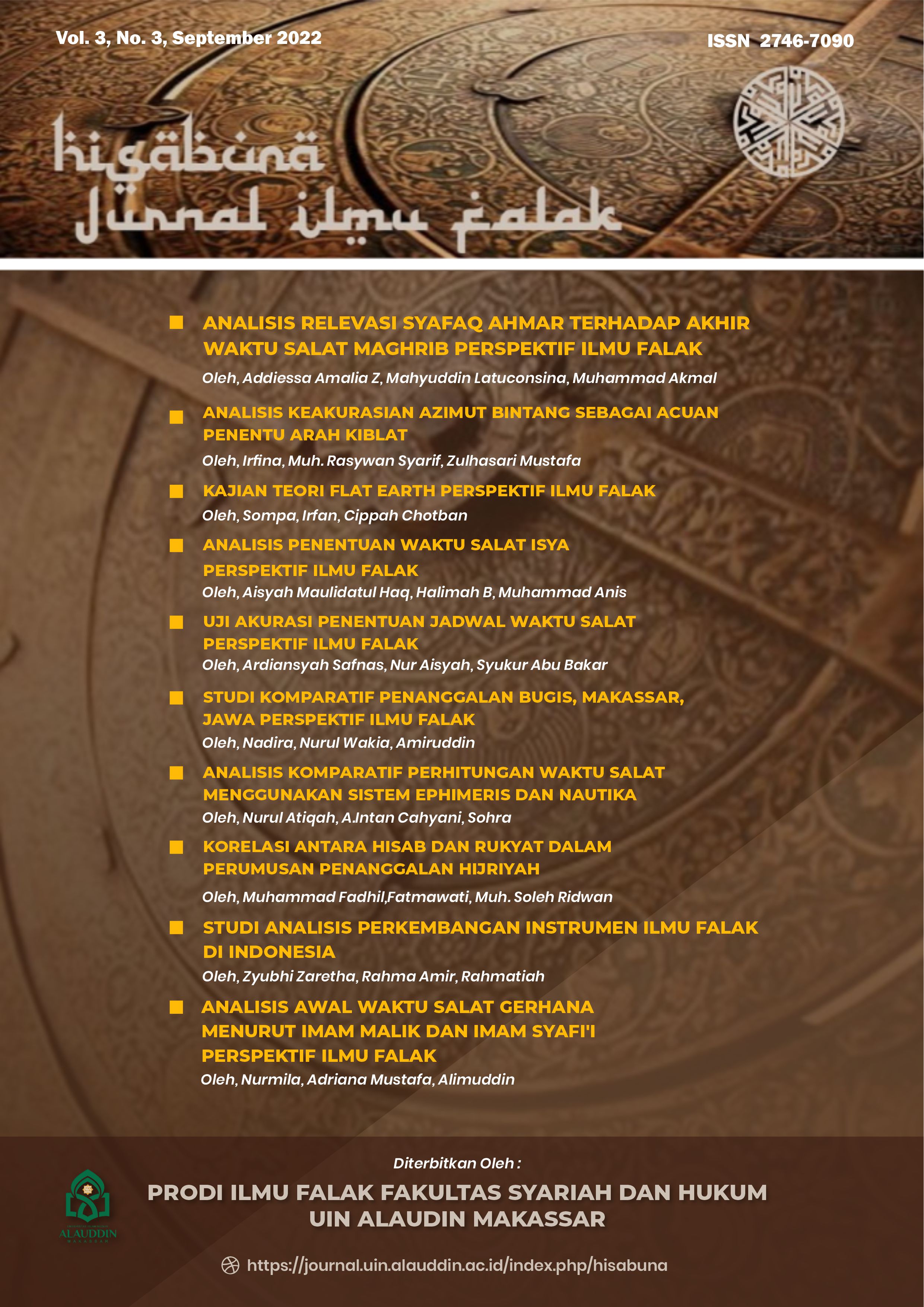Analisis Penentuan Waktu Salat Isya Perspektif Ilmu Falak
Abstract
This study aims 1) to determine the timing of the Isha prayer from the perspective of the Qur'an and Hadith 2) to determine the timing of the Isha prayer from the perspective of astronomy. This type of research is library research “Library Research” with syar'i and astronomical approaches. The results of this study indicate that the timing of the Isha prayer based on the Qur'an has not explained in detail when the beginning and end of the Isha prayer time. Meanwhile, according to the hadith of the Prophet Muhammad. that the beginning of the Isha time coincides with the end of the Maghrib time. As for the end of the Isha time according to the hadith, the longest is at midnight. Although there are other opinions that understand the end of Isha time is just before dawn. As for the timing of the Isha prayer from the perspective of astronomy, namely when the syafak in the west has disappeared from the horizon with a sun height of -18°. Although the height of the sun at the time of Isha stated by astronomers is quite varied. However, this does not become an obstacle in developing and continuing to do research on Isha time. So that the next schedule circulating in the community will vary. This study focuses on the beginning and end of Isha time. This research should be followed by further research for the sake of scientific perfection. Because today's era where skyscrapers are increasingly being built, which of course will affect the duration of the prayer.
Copyright (c) 2022 Aisyah Maulidatul Haq Abdullah, Halimah B, Muhammad Anis

This work is licensed under a Creative Commons Attribution-NonCommercial 4.0 International License.


